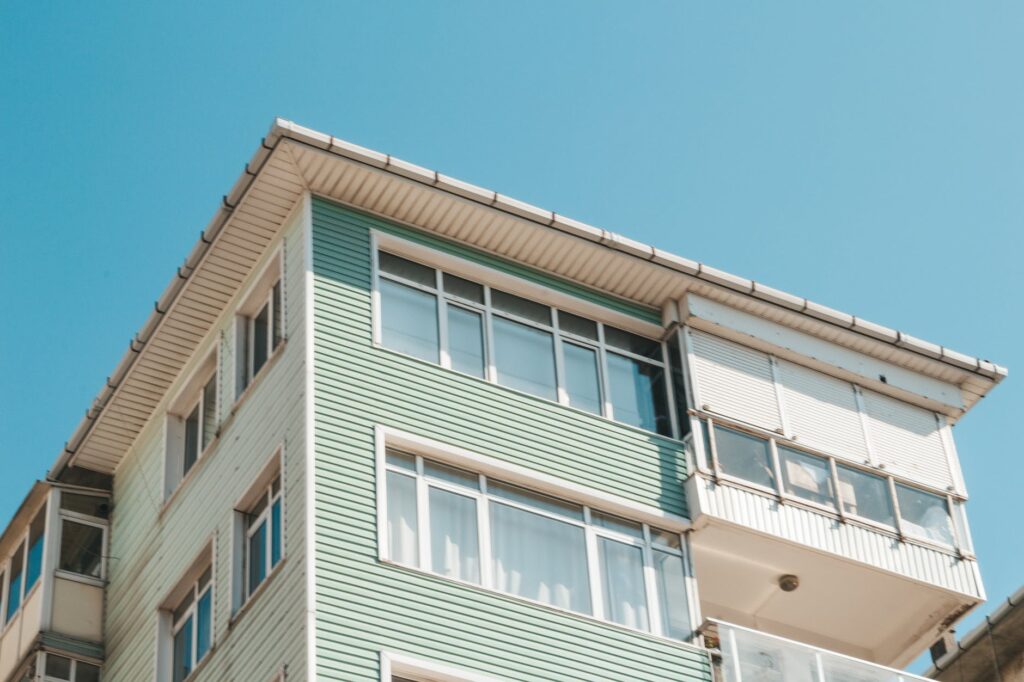How Long Does Aerobarrier Seal Last?
Aerobarrier is a revolutionary system that seals building envelope leaks using a method that’s never been done before.
Its efficacy allows it to seal a leak up to half an inch in diameter – aerosol spray is used to distribute and inject the waterborne sealant into a pressurized building or house.
The self-guiding mechanism results in comprehensive coverage, ensuring that the sealant finds its way to the tiniest leaks. Aerobarrier rests on the edges of a crack or gap, eventually accumulating across the leak’s surface.
Application time depends on the room’s size, but it usually doesn’t take more than two hours. The sealant dries fast, so system cleanup commences soon after.
The quick turnaround is why Aerobarrier is a preferred air sealing strategy for new construction; it doesn’t disrupt the original construction schedule. With this system, envelope leakage is measured in real-time, allowing the contractor or installer to achieve specific air leakage requirements.
How Long Does Aerobarrier Seal Last?
Aerobarrier is proven through third-party lab testing to last half a century. A simulated 50-year durability test demonstrated that this technology wouldn’t suffer from any significant seal degradation. This level of durability is by far unmatched by any other air sealing technology.
Nonetheless, the lifespan of an Aerobarrier seal is still reliant on the application. So, the incorrect application may lead to premature deterioration. For instance, the area or room must be aired out for at least half an hour after sealing. The doors and windows must be opened while the fan is running.
At the same time, coverings and sealing equipment must be removed. There’ve been countless instances of contractors skipping this part, which eventually led to mediocre results and even total failure.
Tightness
The most prominent question about Aerobarrier is how tight it can seal a home. The ideal application seals a house or building to as low as 0.19 ACH50.
Nevertheless, the value differs from one project to another; factors like the builder’s experience, equipment, and the owner’s specific requirements contribute to the airtightness.
Regardless of the value, what’s most important is that Aerobarrier meets all the industry standards, including ENERGY STAR, Well Standard, LEED, IECC, and Net-Zero.
Safety
Although Aerobarrier doesn’t cause any harm once applied, it isn’t safe to breathe during the application. If anyone must enter the room while being sealed, they must wear the appropriate personal protective equipment. It’ll only need about half an hour after applying for anyone to enter the area without protective gear. That’s how quick the sealant adheres to the gaps and becomes completely safe.
A Closer Look at the Five-Step Process
A successful Aerobarrier application requires five critical steps:
- A trailer transports the equipment required for the application, including the Aerobarrier machine, blower door, generator, compressor, hoses, and emitters.
- The installer prepares the building or house by covering and taping the areas that aren’t included in the sealing process. They’ll set up the emitters throughout the room meant to be sealed.
- The room subjected to envelop sealing gets pressurized using an improvised blower door. Unlike the traditional blower door test, Aerobarrier forces air inside to maximize air pressure; it also sends air out through the unsealed openings. The sealant is sprayed into the pressurized space; the airborne sealant particles follow a pressure gradient to the leaky areas. The self-guided mechanism allows for thorough coverage, ensuring that every crack and gap is sealed. The sealant requires a couple of hours (even less) to dry.
- The contractor/installer relies on a computer to monitor the air changes per hour (ACH). The use of computer technology gives accurate control over envelope tightness throughout the process.
- The last step involves a blower door test, but this time, the fan is reversed. The purpose is to verify the air sealing result and produce a pre and post leakage result.
The Aerobarrier project is doable with a two-person team, although it doesn’t have to be that way. The first one monitors and sets up the computer and Aerobarrier machine; the second person handles the room prep, cleanup, and other chores.
Aerobarrier isn’t only long-lasting; it’s also versatile enough to be applied in living spaces of different sizes – from small apartments (500 square feet) to mansions covering at least 10,000 square feet.
What is the key for Aerobarrier?
The key is to pressurize the building or room before sealing. If a blower door(s) can increase the pressure in a large room or space, then Aerobarrier sealing is feasible.
Safety-wise, the sealant is inert and has low VOC; it doesn’t need any chemical reaction to form the seal. In other words, there’s no danger associated with off-gassing.
Aerobarrier is installed in various buildings and structures, including schools, hospitals, and government offices. Aside from saving energy, an indoor environment applied with Aerobarrier is clean, comfortable, and healthy.

